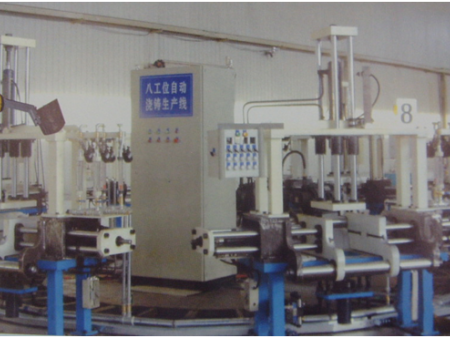
Low-pressure casting machine shares common aluminum alloy low-pressure casting shortcomings and damage prevention
With the promotion of the wave of automobile lightweight, aluminum alloy is used more and more in automobiles due to its advantages of light weight and excellent strength performance, and as electric vehicles gradually replace fuel vehicles, the application of aluminum alloy in automobiles will It will only increase without decreasing, and will develop towards the trend of large-scale, which puts forward new requirements for aluminum alloy die-casting technology. At present, there will be some shortcomings in the process of aluminum alloy die-casting due to materials, molds, processes, and operator levels. There are external shapes, which are visible to the naked eye; there are also internal defects, which cannot be identified by the naked eye. Generally, X-ray flaw detectors are used for inspection to eliminate defects and avoid quality problems caused by defective products.
Defects generally occur for the following reasons:
After the molten metal entering the cavity during the die-casting process forms an extremely thin and incomplete metal layer, it is filled by the subsequent molten metal and leaves traces to produce defects visible to the naked eye;
Too low mold temperature will also cause die casting defects;
The cross-sectional area of the ingate is too small and the orientation is not suitable to cause splashing.
Insufficient pressure given by the die-casting machine to the molten metal will also cause internal looseness or externally visible defects;
Rough appearance or cracks in the cavity of the die-casting mold will bring obvious disadvantages to the die-casting parts;
Improper raw materials of die-casting molds or incorrect heat treatment process, too much temperature difference between hot and cold die-casting molds, too high pouring temperature, insufficient preheating of die-casting molds, and other die-casting defects;
The aluminum alloy contains too much zinc, iron, copper or other impurities, which will form the disadvantage of slag inclusion;
The shortcomings of unreasonable formation of other die-casting processes, etc.
The above common aluminum alloy die-casting defects may directly affect the quality and function of die-casting parts. The appearance defects are visible to the naked eye, and they can be recast according to needs. Through the control of material quality, the improvement of technical personnel, and the adjustment of process and equipment, the die-casting process is optimized. , improve product quality. For internal pores, bubbles, looseness, and slag inclusions, it is necessary to use appropriate X-rays for non-destructive testing.
